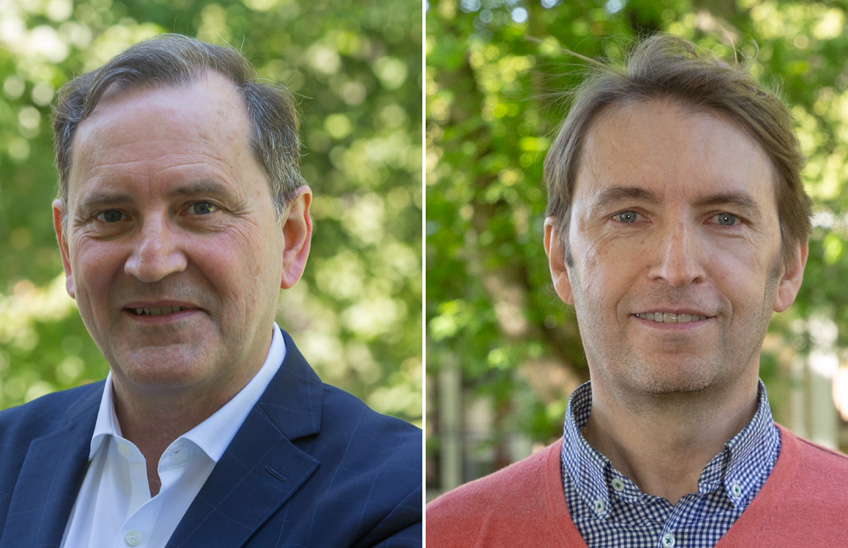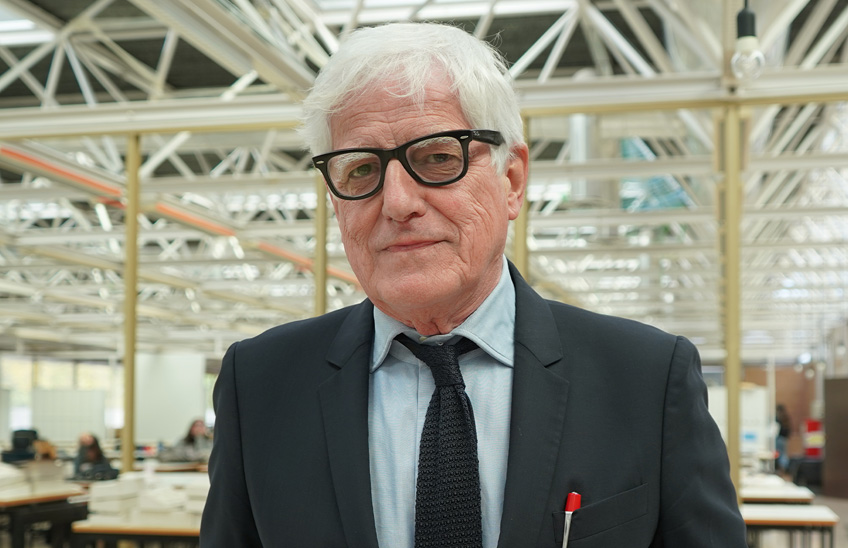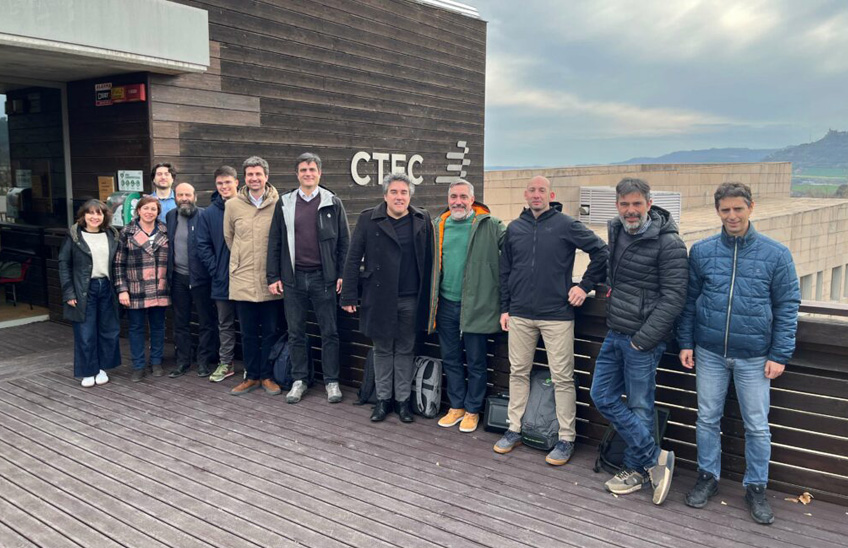The Ministry of Science, Innovation and Universities finances two projects of research of the School of Architecture
The projects are focused on investigating, on the one hand, the contributions from architecture to the Spanish design (1925-1975) and, on the other hand, the potential of photovoltaic transparent glass.
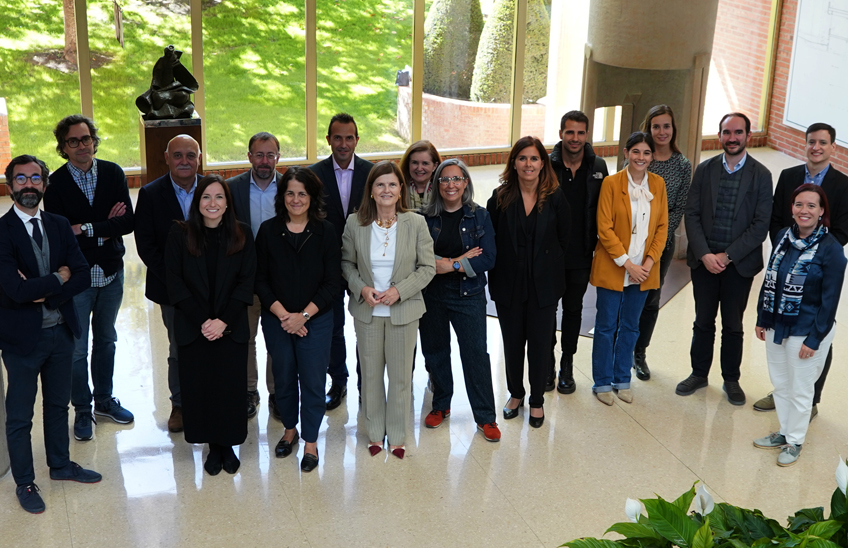
FotoCedida/Research teamsof the DISARQ and CLIMAREADY+TPV projects
24 | 01 | 2025
Two projects led by professors and researchers of the School of Architecture of the University of Navarra have received funding from the Ministry of Science, Innovation and Universities of the Government of Spain, in the framework of the call 'Generation of knowledge 2023'.
The projects will focus their research on various topics: on the one hand, with DISARQ they will study the contributions from architecture to theory, pedagogy and knowledge dissemination of the Spanish design (1925-1975); and, on the other hand, CLIMAREADY+TPV will focus on evaluating the potential of photovoltaic transparent glass for use in schools and homes.
Contributions to design from architecture
María Villanueva Fernández y Héctor García-Diego Vallarías are the principal investigators of DISARQ. "The field of design in general, and industrial in particular, did not emerge in our country as an independent discipline until almost the last third of the twentieth century. In the beginnings of the design the architect played an essential role, as he carried out a work of assimilation of the currents of his environment, and dissemination of the new lines of work that, although not premeditated, was crucial for the momentum and eventual constitution of design as discipline", explains Héctor García-Diego.
"We consider that the study of this work can make a triple contribution to knowledge. On the one hand, to bring to light a hidden episode in the history of design, on the other, to raise awareness and transmit to society the importance and transcendence of the 20th century design as tool of transmission of the report and understanding of the solutions provided to the significant changes in the society of the last century and, finally, to value the role of women architects and designers in this singular business ", adds María Villanueva. In addition, the main researchers emphasize that this project can lead to reflections that contribute to the development of the discipline in the current context, such as the need to recover tradition and to produce sustainable objects.
One of the greatest challenges of project, they say, has to do with the multidisciplinarity inherent to topic, as it involves disciplines such as architecture, art, history, aesthetics, business, industry or craftsmanship.
A decarbonized architecture
In the case of CLIMAREADY+TPV, the principal investigators are Aurora Monge Barrio y Ana Sánchez-Ostiz Gutiérrezwho are also part of the researcher team at the BIOMA Institute of the University of Navarra. "The project can transform the architecture of school and residential buildings by incorporating photovoltaic transparent glazing (TPV), which will contribute to decarbonization and emissions reduction. It will also mitigate the effects of climate change, such as heat waves, by providing thermal comfort and energy security, especially for vulnerable populations. Its large-scale implementation will not only facilitate the energy transition to more sustainable sources, but will also encourage energy self-consumption, which can translate into reduced costs for users, and will take into account the influence of the urban microclimate. This approach financial aid to create more sustainable, healthy and resilient cities, promoting a higher quality of life for society, explains Ana Sánchez-Ostiz Gutiérrez.
The project presents different challenges that explains the researcher: "The biggest challenge is to achieve optimal integration of TPV glasses with passive architectural strategies, such as solar gain and protection, as well as ventilation to ensure efficient decarbonization. We highlight the innovation of incorporating these glasses on a large scale without compromising the aesthetics of buildings and their ability to generate energy in a sustainable manner. As well as the challenge involved in overcoming the current technical and economic limitations of this technology to make its adoption viable and effective in the future. In addition, the implementation at the urban level, on a large scale, using GIS tools will allow the identification of priority areas to maximize its impact".
Research teams
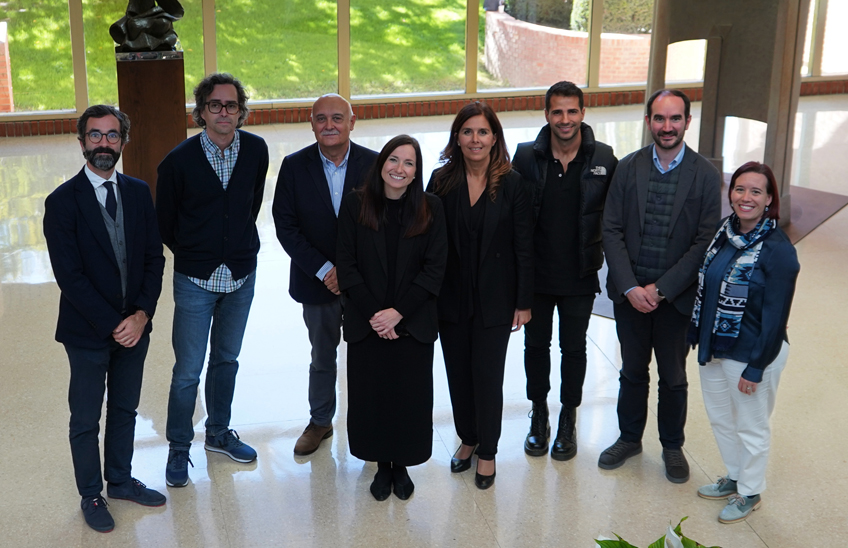
The DISARQ team is composed of: principal investigators María Villanueva Fernández and Héctor García-Diego Vallarías; researchers from other centers Penny Sparke (Kingston University London), Domitilla Dardi (IED Roma), Patricia Molins de Fuentes (Museo Reina Sofía), Pedro Reula Baquero and María Eugenia Josa; and researchers from the University of Navarra Mariano González Presencio, Jorge Tárrago Mingo, Marta García Alonso, Pablo Arza Garaloces, Andrés Tabera Roldán, Raquel Cascales Tornel and Javier Sáez Gastearena.
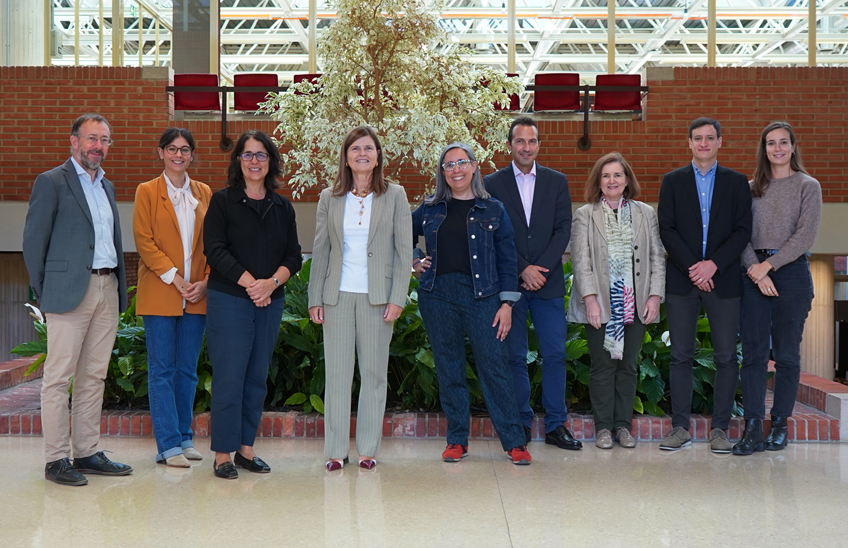
The CLIMAREADY+TPV team is composed of: principal investigators Aurora Monge Barrio and Ana Sánchez-Ostiz Gutiérrez; Germán Ramos Ruiz; Juan Carlos Gamero Salinas; Purificación González Martínez; María Fernández-Vigil Iglesias; Joaquín Torres Ramo; Marina Vidaurre Arbizu; Elena Aparicio González and Ainhoa Arriazu Ramos.

